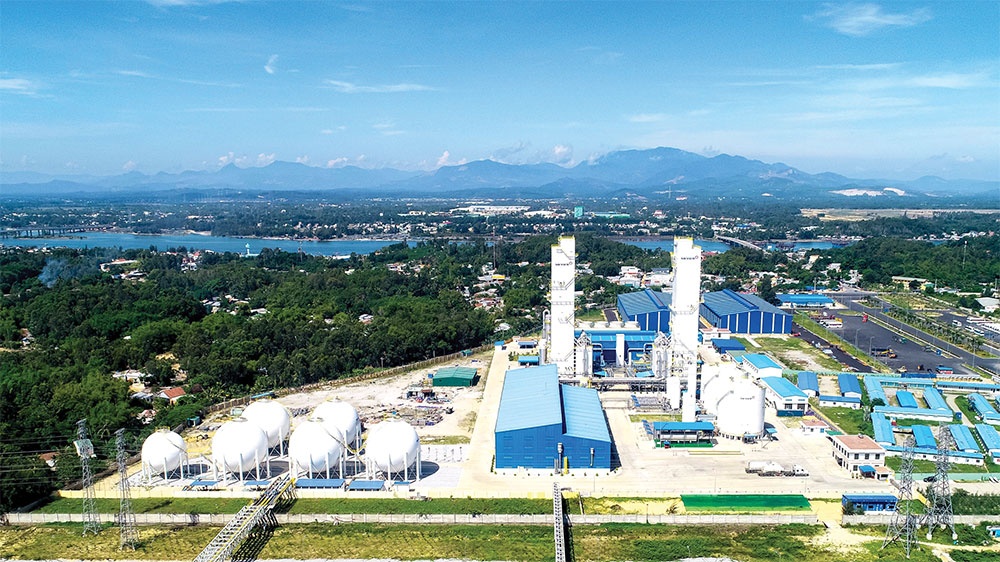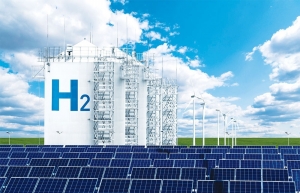Creating suitable models for exploitation of hydrogen
Vietnamese renewable energy developer The Green Solutions intends to sell commercial products from its Tra Vinh green hydrogen production facility in 2023. Besides serving the local market, The Green Solutions will export green hydrogen, green ammonia, and green oxygen to Japan, South Korea, Singapore, and Europe.
 |
| The Tra Vinh green hydrogen production facility will create an annual output of 24,000 tonnes of hydrogen |
However, there are some obstacles hindering the progress of the project. The Tra Vinh Green hydrogen production facility was slated to go into trial operation in the first quarter of 2024 if it was inaugurated by mid-June this year. However, the legal procedures have yet to be finalised by the investor and the province.
Covering an area of 22.7 hectares, the Tra Vinh green hydrogen production facility has the total investment capital of VND19.5 trillion ($814 million). In the first phase, the project will create an annual output of 24,000 tonnes of hydrogen, 150,000 tonnes of ammonia, and 196,000 tonnes of oxygen.
Hydrogen has become one of the key focus areas under Vietnam’s energy transition roadmap given that Vietnam aims to achieve net zero carbon emissions by 2050.
Dang Thanh Tung, representative of the Strategy Department at the state-run Vietnam’s oil and gas group PetroVietnam, said the group has favourable conditions to produce hydrogen commercially after 2030, which will help it penetrate the global market. PetroVietnam is researching the development of hydrogen energy and carrying out feasibility studies for projects that produce hydrogen from renewable energy.
“PetroVietnam’s facilities like Dung Quat and Nghi Son are formulating a long-term research plan for hydrogen. In 2021-2030, renewable energy will account for 5-10 per cent of the group’s total capacity. This rate will rise by 20 per cent in the following 15 years,” Tung added.
Several energy developers have warned that Vietnam will face some challenges like technology, workforce, and finance to make its transition to hydrogen energy. Energy prices and water electrolysis expenses still account for a large proportion of the costs of producing hydrogen from renewable energy.
In addition, the development of storage, transportation, and distribution infrastructure is currently very limited, hindering the widespread application of hydrogen energy. Vietnam is pursuing an energy transition with a view to creating a carbon-neutral society by producing renewable energy and reducing fossil fuels in the national energy system.
Tran Thien Khanh, a senior researcher at the Institute for Circular Economy Development under the Ho Chi Minh City National University, said that Vietnam is facing a shortage of energy. “If there are no measures, the shortage will become more severe in the future. Developing new energy sources is the only way for Vietnam to ensure energy security,” Khanh said.
There are ample opportunities for investments in hydrogen in Vietnam given that the global hydrogen market is predicted to grow fast after 2030. According to data from the German Agency for International Cooperation (GIZ), the global hydrogen demand will reach 78 exajoules in 2050, a tenfold increase from 2025. One exajoule equals seven million tonnes of hydrogen.
The large-scale adoption of hydrogen is predicted to generate a revenue of $2.5 trillion per year and 30 million jobs.
The production expenses for green hydrogen will decrease significantly (by 50 per cent) in 2030. This is due to the decline in power prices and investment costs.
Green hydrogen prices will be reduced to $2 per kg in 2030 and $1 per kg in 2050, making it more competitive with traditional hydrogen and natural gas. Hydrogen prices will be lower than those of renewable energy. Other factors such as efficiency, equipment lifespan, and operating hours will contribute to lower production costs.
According to the Ministry of Industry and Trade, the country’s electricity demand will maintain its growth rate of about 8 per cent per year in the next five years.
However, there are many challenges to ensuring the electricity supply towards 2025, especially in the event of extreme weather phenomena and energy fluctuations in the global market. The ratio of the national capacity reserve by 2025, excluding renewable energy, is only about 18 per cent.
In order to reduce carbon emissions, the draft Power Development Plan VIII sets high goals for the use of green hydrogen and green ammonia in future coal- and gas-fired power plants to produce electricity by blending them partially with these fuels. Meanwhile, green hydrogen will also be employed as a backup for flexible coal-fired power plants to ensure system reliability and backup for the operation of wind and solar power plants.
Many energy developers think that the Vietnamese government should issue policies to encourage the development of hydrogen. To shape the domestic hydrogen market, more ambitious greenhouse gas reduction targets must first be introduced. Incentives to encourage the expansion of hydrogen production are also needed, as are policies to support the development of clean hydrogen.
 | Escalating national hydrogen production and exports When contemplating the growth of the hydrogen industry in Vietnam, it is necessary to examine the industry’s export focus towards key Asian markets. |
 | Race for hydrogen energy heating up against backdrop of carbon-free future The emerging hydrogen market is set to be very complex, and for Vietnam to become a producer and exporter of green hydrogen over the next five years, there will be huge challenges, but the potential upsides are vast. |
What the stars mean:
★ Poor ★ ★ Promising ★★★ Good ★★★★ Very good ★★★★★ Exceptional
Related Contents
Latest News
More News
- TCP Group partner with VNUS to launch water conservation project (December 25, 2025 | 14:00)
- Heavy industries set for pilot greenhouse gas quotas (December 25, 2025 | 10:00)
- Swedfund invests in MSME growth and climate action in Vietnam (December 19, 2025 | 11:42)
- GreenYellow brings solar energy to light up remote schools in Tuyen Quang province (December 19, 2025 | 08:00)
- Charge+, Grab partner to develop EV charging network in Vietnam (December 18, 2025 | 17:11)
- Linking sci-tech and innovation to Vietnam’s net-zero future (December 18, 2025 | 14:31)
- Driving double-digit growth through green and circular transformation in Vietnam (December 17, 2025 | 09:00)
- Standard Chartered and ACCA deepen collaboration to develop Vietnam’s talent for a sustainable future (December 15, 2025 | 18:18)
- Schaeffler reports strong early output from Dong Nai solar project (December 12, 2025 | 15:16)
- Forestry conference highlights biodiversity and sustainability goals (December 09, 2025 | 13:35)

 Tag:
Tag:




















 Mobile Version
Mobile Version